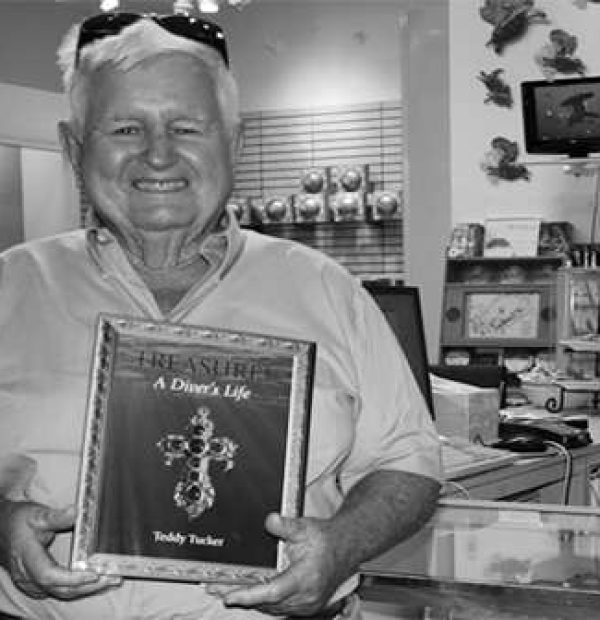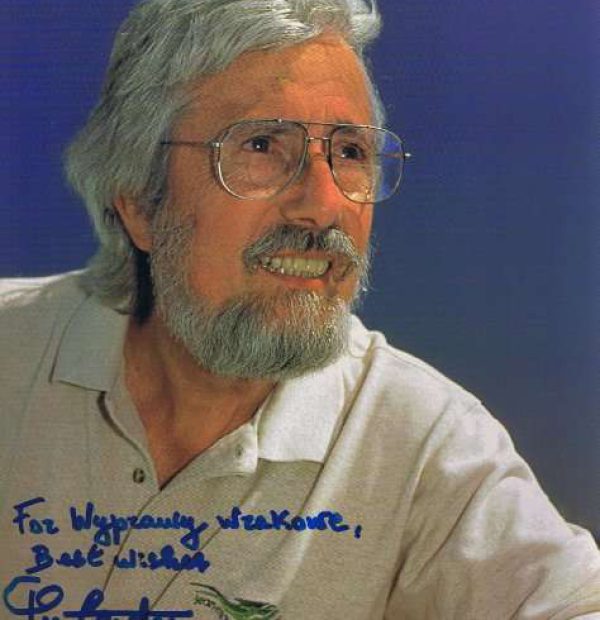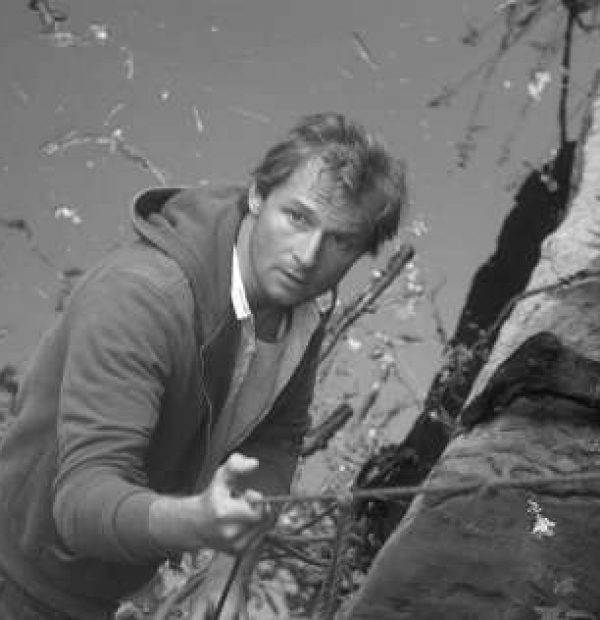Tuesday, 23 April 2024
Menu
A holiday in northern France in 1937 made Hass passionate about underwater hunting and awakened his desire for adventure. He made his first trip to Yugoslavia at the age of 19, which led him to abandon law in favour of zoology. It was in Yugoslavia that young Hans parted with his harpoon, which he exchanged for an underwater camera. He was posed by his American friend William Beebe. Hass constructed an “open helmet” with an aeration pump that allowed him to spend more time underwater. Unfortunately, it limited him quite a bit in terms of penetration range. There was less comfort underwater because the helmet was so heavy that it pressed him to the ground, making him move very slowly. Despite the drawbacks that this diving helmet had, the scientist spent many hours underwater, sometimes hanging from vertical cliffs like a spider.
He set off on another expedition in 1939. He was accompanied by two friends, Alfred von Wurzian and Jörg Böhler. It was in the Caribbean, while fishing with mask, fins and a harpoon, that he first encountered sharks, irritated by human presence. The friends did not only hunt and take photos. During his many dives, young Hans made his first film, “Tracking in the Sea”. The sudden outbreak of World War II extended their expedition to nine months. They returned to Vienna via the USA, China and Russia.
Among the coral reefs of the Caribbean Sea, he realised that in the ocean he felt like a “fish in water”. He realised that he would get the best results by working on “the ground” and not by observing life in artificial bodies of water.
He dreamt of going on an expedition that would take him to the wide seas of the southern hemisphere, where he wanted to study unknown animals and plants. To make his dream come true, he needed a large ship, well-stocked with equipment, and a good research team. And for this he needed money. At the end of 1941 he published the book “Unter Korallen und Haien” [“Diving to Adventure”]. After the success of the first item, he wrote many articles and books and gave many lectures, the proceeds from which were to allow him to fulfil his dream. At the same time he wanted to show that, as it was claimed, sharks were not bloodthirsty creatures and that they were no obstacle for scientific workers working in the depths of the oceans.
In 1942. In 1942, Hass planned another expedition, whose destination turned out to be the Aegean Sea due to the prevailing war in Europe. On this expedition he planned to combine the enormous mobility provided by fins and a self-contained oxygen apparatus. Hermann Stelzner, technical manager of the Dräger Company in Lübeck, and Hans together built the “Dräger-Gegenlunge”, an oxygen rebreather equipped with an oxygen bag and an oxygen valve. The continuous flow regulator fitted to the Gegenlunge was replaced by a simple push-button valve, allowing the diver to manually add oxygen to the breathing bag according to its consumption and control its buoyancy. The goggles previously used were replaced by a mask covering the eyes and nose. These were not technical innovations, but they changed the way divers moved underwater. Previously, they “walked” on the ground, and the changes allowed them to move like mammals. This fact was documented during the filming of “Menschen unter Haien” [“Man Amongst Sharks”].
The maximum depth set by Stelzner was 60 metres, which was sufficient as most of the research was carried out much shallower. In addition, diving in the shallows gave better results in terms of light for photographs and films. Another advantage of the new equipment was the change from pure oxygen to other gas mixtures, which increased the maximum depth.
During work in the Aegean Sea, large-scale marine research was carried out for the first time. New diving equipment allowed researchers to penetrate underwater caves, resulting in the description of the microorganism ‘Reteporiden’, which proved to be a milestone in marine biology. This was the first project in which rebreathers were used.
The combination of self-contained breathing apparatus and fins opened up a new way for scientists, but due to the risks carried by breathing pure oxygen, this was not widely used. In the middle of the century, oxygen rebreathers were replaced by apparatus using only compressed air. Today, however, thanks to oxygen mixtures such as Nitrox, Trymix or Heliox this equipment has become popular, but it is still very expensive.
Finally, in 1943, Hass managed to raise enough money to buy a research vessel called SEA DEVIL, which was requisitioned by the Russian army shortly afterwards. But Hass did not give up. In 1951 he founded the International Institute for Submarine Research (IISF) in Liechtenstein. Soon after, he gathered around him a group of scientists with whom he set out to study various coral reefs. In 1953/54 on the ship, “Xarifa” he crossed the Atlantic and the Caribbean Sea and the Galapagos Islands in the Pacific, and in 1957/58 he sailed through the Red Sea and the Indian Ocean to the Nicobars and finally to Singapore. These expeditions produced many sensational results, such as the first human encounter with a sperm whale! In the Indian Ocean Hans made a discovery that disproved Charles Darwin’s earlier theory on the formation of coral atolls in the Maldives.
He became world-famous through books and films, which were first shown in cinemas and later on television, which greatly popularised free diving. In 1951 the film “Abenteuer im Roten Meer” [“The Red Sea Adventure” received the first prize in the documentary film category at the Venice Biennale in 1951. Its heroine was Hass’s beautiful wife Lotte. In 1959 Hass received an Oscar for underwater cinematography.










Welcome to DIVERS24.COM, your daily source of scuba news, freediving, scuba diving information, and equipment reviews. Our comprehensive coverage of the dive industry from A to Z provides you with all the latest scuba news, training updates, underwater photography tips, and everything else related to scuba diving. Whether you’re a beginner or an experienced diver looking for more knowledge about scuba gear or techniques – we’ve got it covered! With our in-depth articles written by experienced divers who have been there and done that, you are sure to find exactly what you need here at Divers24.com. Dive into scuba news today!
Underwater Media Sp. z o.o.
Szafarnia 11/F8,
80-755 Gdansk, Poland
Welcome to DIVERS24.COM, your daily source of scuba news, freediving, and scuba diving information. Sign in for a weekly news update and discount coupons for dive gear and apparel.
@2023 - underwatermedia.pl. All Right Reserved. Designed and Developed by Tworzenie stron internetowych Gdansk

The Divers24 portal is currently the largest online medium treating diving in Poland. Since 2010 we have been providing interesting and important information from Poland and around the world on all forms of diving and related activities.
Contact us: info@divers24.com